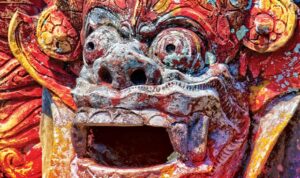Media localization is gaining significant traction in Indonesia. A country with thousands of islands and hundreds of languages. With strong internet proliferation, availability, and accessibility – local Indonesians are craving foreign content now more than ever before.
This creates the need for highly specific Indonesian localization as part of the digital media localization process. But what is media localization and in what context does it play out within Indonesia?
What’s more, which foreign companies have already entered the Indonesian market and what strategies have they used? This article explores the answers to these questions.
What is digital media localization?
Media localization and digital media localization are two sides of the same coin. In particular, we are talking about media as a form of content that is consumed by consumers in Indonesia. This content – in its digital form – can be in the form of internet and website usage, social media usage, as well as content in the form of audiovisual formats in terms of television shows, movies, series, and others.
When talking about media localization, we specifically focus on the multiple Indonesian languages spoken in the country as well as the multiple sub-cultures that are present there. Translations from foreign languages, therefore, must be hyper-localized to the various Indonesian languages in order to gain a wider audience share and greater levels of acceptance and adoption of this content.
How to make the content more accessible and relevant to the Indonesian audience
There are three primary legs that relate to making foreign content accessible and relevant to the Indonesian audience. These are language, platforms, and localization. We explore each one in turn below.
- Language: Indonesia is a large country that consists of many islands and there are a multitude of languages spoken there. In fact, we are looking at a figure that’s above 200. Although the country does have an official language that is used by government officials, in schools, and in Indonesian media, the vast variety of languages and sub-cultural groups within the country creates huge levels of diversity. This is why it is important for foreign media companies to ensure that they choose the right language and culture when carrying out their Indonesian localization.
- Platforms: another important aspect of making foreign media content accessible and accepted by Indonesian audiences is the fact that there is such a wide variety of media platforms. These range from web-based platforms such as search engines, e-commerce stores, high internet penetration and mobile phone adoption, to audiovisual content in the form of films and series, in addition to many others. Therefore, foreign media content organizations need to carefully consider which platform they will use to target their intended audience.
- Localization: finally, foreign companies must ensure that they carry out accurate media localization that takes into account not only accuracy in terms of translations but which also ensures that content is localized for local audiences in order not to offend or dissuade anyone from watching, thus potentially losing out on a key audience in Indonesia.
Lessons learned: Strategies followed by some industry giants to gain a foothold in Indonesia
In this part of the article, we will explore three different global companies and their strategies for entering the Indonesian market with accurate media localization. In particular, we will focus on Huawei, iFlix, and Disney. Let’s take a closer look.

- Huawei: Huawei is a Chinese telecoms company that has spread its sphere of influence to multiple global locations, among which is Indonesia. The company has been operating in Indonesia for over two decades now and despite general mistrust by Indonesians of Chinese influence, Huawei has not received much or any negative backlash in the media for its presence in the country in terms of helping Indonesians build and strengthen their telecoms infrastructure.
One of the ways Huawei has done this is by specifically focusing on Indonesian localization. In practice, this means that the company has come to Indonesia with the aim of building infrastructure but in addition to this, it is also investing heavily into training locals to ensure that they can handle and properly man the infrastructure being built. As such, the localization practice is inclusive and has helped this telecom giant make great strides in the country.
- iFlix: iFlix is a media content company that has quickly become global in nature. In particular, it is focusing on producing and making accessible content to Indonesian audiences, among many others. One of the ways it makes huge quantities of content available is through the use of machine translation through in-house media localization services.
- Disney: Disney’s history in Asia, and particularly in China, is fraught with ups and downs. For example, although it initially experienced success with some of its animated children’s films such as Pinocchio, the start of the Cold War meant the end of its presence there.
Only over the last two or three decades has Disney returned there and it is ensuring it will see the greatest levels of success there. How? Through accurate media localization. And in the context of Indonesian media, this means adapting music, imagery, cultural nuances, colors, subtitles, dubbing, and more to fit the right cultural context.
Concluding remarks
Media localization services and foreign audiovisual content companies will need to step up their game when it comes to media localization for Indonesian media if they want to successfully penetrate the market and ensure that they succeed within it without alienating large portions of their audience. This will require learning from the lessons, strategies, and approaches of some of the industry’s most prominent players and adapting them to the Indonesian market.
